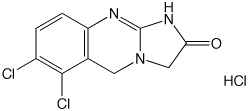Definition
Thrombocytosis is a blood disorder, in which the body produces a surplus of platelets (thrombocytes).
Description
Thrombocytosis is an abnormally increased number of platelets in the blood. Platelets are blood cells that stick together, helping blood clot. Thrombocytosis is a condition that may have many causes.
Throbocytosis is classified as one of two types. Secondary thrombocytosis can be traced to another cause, such as inflammation, severe bleeding, iron deficiency, or some cancers. Primary thrombocytosis (or essential thrombocythemia) is a single disease entity, with unique clinical characteristics.
Causes & symptoms
The cause of essential thrombocytosis is unknown.
Secondary thrombocytosis may develop as a result of:
- Acute hemorrhage or infection
- Anemia
- Arthritis and other chronic inflammations
- Cancer
- Exercise
- Iron deficiency
- Medication
- Osteoporosis
- Removal of the spleen (splenectomy)
- Polycythemia vera (a disorder affecting other red blood cells, as well as platelets)
- Stress
- Surgery.
Symptoms
Two of every three patients who have thrombocytosis do not have any symptoms of the disease at the time of diagnosis. Younger patients may remain symptom-free for years.
Enlargement of the spleen is detected in 60% of patients with thrombocytosis. The liver may also be enlarged. As many as half of all patients experience bleeding from the skin, gums, or nose, and 20-50% have some blockage of veins or arteries.
Other symptoms of thrombocytosis include:
- Bloody stools
- Bruising
- Dizziness
- Headache
- Hemorrhage
- Prolonged bleeding after having surgery or after having a tooth pulled
- Redness or tingling of the hands and feet
- Weakness. In rare instances, the lymph nodes become enlarged.
The highest platelet counts usually produce the most severe symptoms. Younger patients (especially women) may not have symptoms, even though their platelet counts are very high.
Complications
Complications of thrombocytosis include stroke, heart attack, and formation of blood clots in the arms and legs.
A doctor should be notified whenever bleeding is unexplained or prolonged or the patient develops:
- Chest or leg pain
- Confusion
- Numbness
- Weakness.
Diagnosis
The patient's symptoms suggest the presence of thrombocytosis. Blood tests confirm the diagnosis.
Bone marrow aspiration (removal of a tissue sample for microscopic examination) may also be performed.
Treatment
The key to treating secondary thrombocytosis is treating the underlying condition.
Any patient who has thrombocytosis should be encouraged not to smoke.
In young people who have no symptoms, this condition can remain stable for many years. These patients should be monitored by a physician, but may not require treatment.
Treatment for patients who do have symptoms focuses on controlling bleeding, preventing the formation of blood clots, and lowering platelet levels. Treatment for secondary thrombocytosis involves treating the condition or disease responsible for excess platelet production.
In 1997, the United States Food and Drug Administration (FDA) approved the use of anagrelide HCI (Agrylin) to reduce elevated platelet counts and decrease the risk of clot formation. Some patients have benefited from the use of hydroxyurea, an anti-cancer drug.
Low doses of aspirin may prevent clotting, but can cause serious hemorrhages.
If drug therapy does not bring platelet counts down to an acceptable level as rapidly as necessary, plateletpheresis may be performed. Usually combined with drug therapy and used primarily in medical emergencies, this procedure consists of:
- Withdrawing blood from the patient's body
- Removing platelets from the blood
- Returning the platelet-depleted blood to the patient.
Prognosis
Many patients with thrombocytosis remain free of complications for long periods. However, some patients may die as a result of blood clots or uncontrolled bleeding.
Prevention
There is no known way to prevent thrombocytosis.
Further Reading
For Your Information
Books
- Berkow, Robert, ed. The Merck Manual of Medical Information: Home Edition. Whitehouse Station, NJ: Merck & Co., Inc., 1997.
- Isselbacher, Kurt, J., et al, eds. Harrison's Principles of Internal Medicine. New York, NY: McGraw-Hill, Inc., 1994.
Other
- FDA Approves Marketing of Agrylin for Thrombocythemia. http://www.plsgroup.com.dg/2114a.htm (31 May 1998).
- The Merck Manual: Primary Thrombocythemia. http://www.merck.com/!!ux1sK3PObux1sK3POb/pubs/mmanual/html/mjglmjdg.htm (3 June 1998).
- Primary Thrombocythemia. http://www.healthanswers.com/database/ami/converted/000543.html (31 May 1998).
Gale Encyclopedia of Medicine. Gale Research, 1999.



